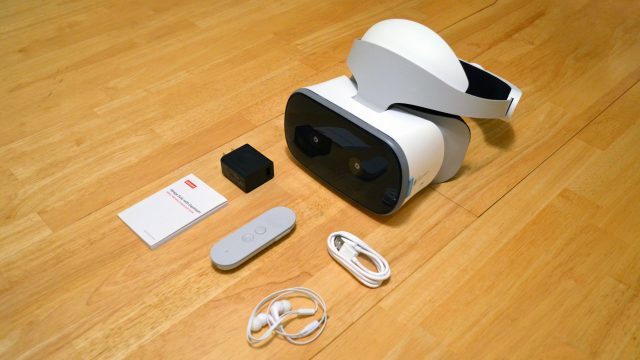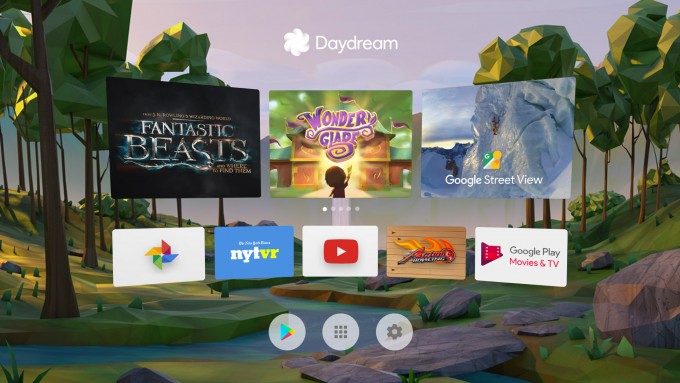Setup & Content

Setting up the Mirage Solo is quite easy; you’ll log into a Google account and see a handful of familiar Android options. While Daydream presents you with a VR-specific front-end, it’s clear that the headset has a quite mature foundation thanks to its basis in Android; it supports a much wider range of deeper features than Go, for instance, including multiple user accounts, VPNs, storage management, battery management, and more. Oh and there’s a micro-SD card slot for expanding storage, which will be a godsend to anyone who really makes good use of the headset.
Content wise, the headset draws upon the Daydream store. Every Daydream application (even older apps not updated for 6DOF) is supported by the Solo. Aside from a section in the store called ‘WorldSense Powered Experiences’, there’s no clear indication about which individual applications make use of the headset’s 6DOF tracking capability. There’s no search function for the app store either, and no web browser, which is odd considering Google is involved.
Experience

The Solo’s interface (which is identical across other Daydream headsets too), deserves a call out for its looks and simplicity. I much prefer it to the over-designed interface used by Go and Gear VR. The interaction design is consistent and easy to understand, and the whole thing feels buttery smooth, whether it’s whisking between menus or jumping in and out of VR apps.
While the Mirage Solo’s more powerful processor seems to generally lend the headset to graphically better looking titles than the Go, at twice the price, it needs to provide twice as much value to really feel like a good investment. Despite competent hardware (foiled in many ways by poor ergonomics) the Mirage Solo, like the Go, feels like it’s missing ‘must-have’ content among its claimed “more than 350 apps.”
While 6DOF head tracking definitely adds a little immersion and comfort to any VR experience, the headset is missing apps that are truly defined by the feature—apps which make you say ‘I’m glad I paid a $200 premium over a similar headset for this feature’. Yes there are apps which ask you to gently lean from side to side to dodge a projectile (like Merry Snowballs), or duck to avoid a tree branch (like Extreme Whiteout), but the best apps on the platform aren’t designed for, or drastically enhanced by, 6DOF.
It’ll take a concerted effort to build those apps, and that means convincing developers that it’s worth their time, when there are so many more mobile 3DOF headsets they could be building for. Don’t get me wrong—6DOF is amazing and it’s what everyone should want, but the reality is that games need to be specifically designed to make use of 6DOF; simply slapping it in as a bonus doesn’t add much to what you could get for half the price. In time, Daydream could grow a strong library of great games that make people realize how much more engaging made-for-6DOF content can be, but that isn’t the case today.
Disclosure: Lenovo provided Road to VR with Mirage Solo headset.






